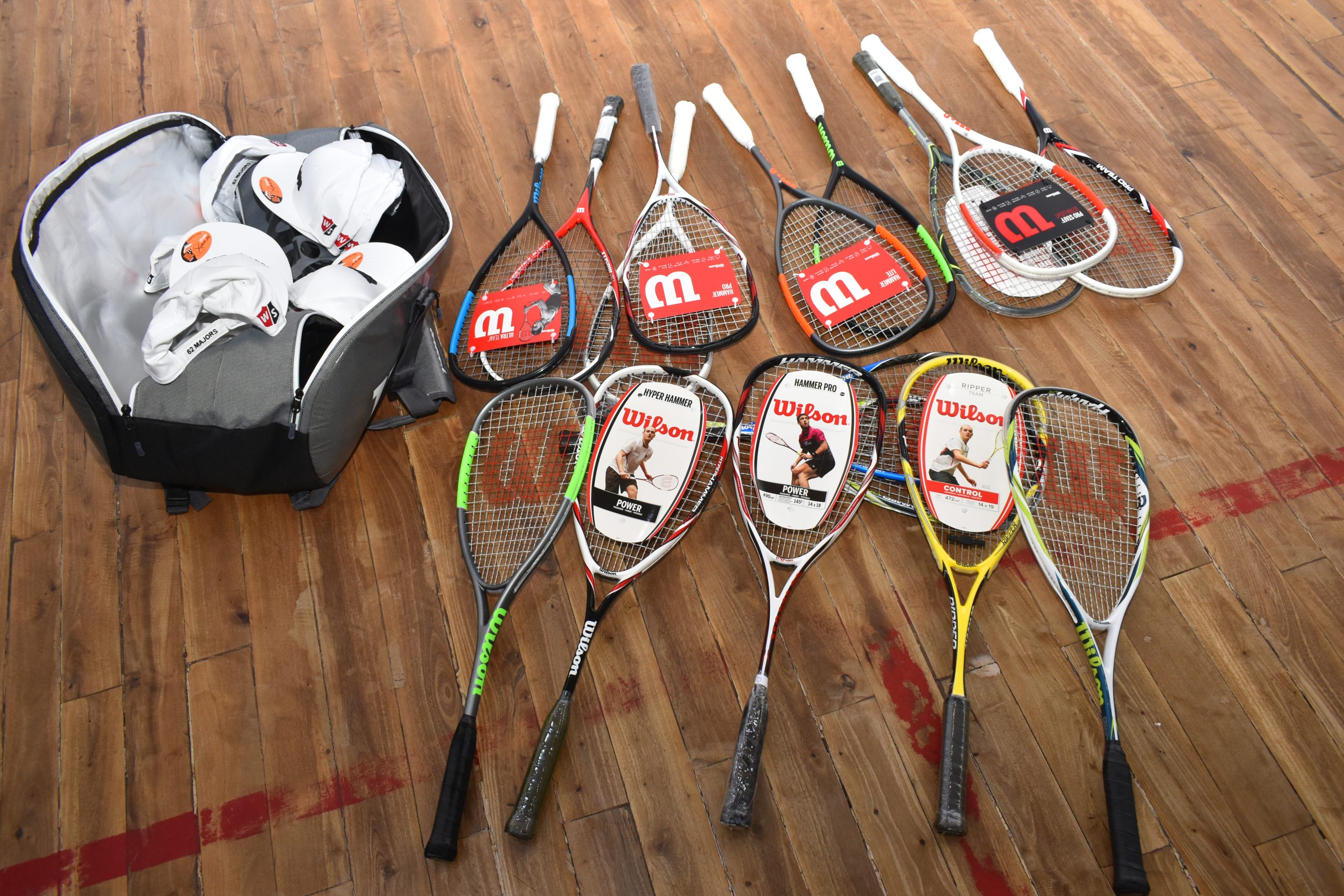Injury Prevention and Recovery: Staying Fit and Healthy on the Squash Court

The Ultimate Squash Fitness Routine: Conditioning for Peak Performance
October 22, 2023
Mastering the Basics: A Beginner’s Guide to Squash Technique -(2023 Update)
October 22, 2023While squash offers an incredible workout and a competitive spirit, it also comes with a potential risk of injuries. In this blog post, we’ll explore the essential strategies for squash injury prevention and recovery, ensuring you can stay fit, healthy, and injury-free on the squash court.
Injury Prevention and Recovery: Staying Fit and Healthy on the Squash Court
Understanding the Risks
Before we delve into injury prevention strategies, it’s crucial to understand the potential risks associated with squash. The sport’s dynamic nature, with quick sprints, sudden stops, and rapid changes in direction, places significant stress on the body. Common squash-related injuries include:

1. Ankle Sprains: Due to frequent lateral movements, ankle sprains are prevalent in squash.
2. Knee Injuries: The rapid acceleration and deceleration can strain the knee ligaments, leading to injuries.
3. Elbow and Wrist Pain: The repetitive gripping and swinging motion can cause issues in the elbow and wrist.
4. Shoulder Strains: Aggressive serves and overhead shots can strain the shoulder muscles.
5. Back Injuries: The combination of twisting and bending movements may lead to back problems.
Squash Injury Prevention Strategies

1. Warm-Up and Stretching: Prior to stepping onto the court, a thorough warm-up is essential. Focus on dynamic stretches that mimic squash movements to prepare your muscles and joints for action.
2. Proper Footwear: Invest in squash-specific shoes with good ankle support and grip to prevent ankle injuries.
3. Brace for Support: If you have a history of ankle or knee issues, consider using braces for extra support.
4. Strengthening Exercises: Incorporate strength training exercises, especially for the legs, to enhance your stability and prevent injuries.
5. Technique Improvement: Work on your squash technique to ensure you’re using your body efficiently and reducing the risk of overuse injuries.
6. Footwork Practice: Develop your agility and footwork to reduce the strain on your joints when making quick movements on the court.
7. Proper Nutrition: A well-balanced diet provides the essential nutrients your body needs to recover and stay injury-free.
8. Adequate Rest: Listen to your body and ensure you have enough rest between matches and training sessions to prevent overuse injuries.
Injury Recovery and Rehabilitation
Despite your best efforts in squash injury prevention, injuries can still occur. When they do, a combination of rest, rehabilitation, and professional guidance is essential for a full recovery. Here’s how to approach injury recovery:
1. Seek Medical Advice: If you suspect an injury, consult a healthcare professional to assess the severity and recommend appropriate treatment.
2. RICE Protocol: Rest, Ice, Compression, and Elevation (RICE) is a standard method for the immediate management of most sports injuries. It helps reduce swelling and alleviate pain.
3. Physical Therapy: A physical therapist can design a tailored rehabilitation program to restore mobility and strength. Follow it diligently to aid recovery.
4. Gradual Return: When given the green light, return to squash gradually. Don’t rush the process, as this can lead to reinjury.
5. Adapt Technique: If the injury was due to poor technique, work with a coach to modify your approach to avoid a recurrence.
6. Stay Positive: Maintaining a positive attitude and staying patient during recovery can significantly impact your healing process.
Common Squash Injuries and Their Management

Let’s explore some of the most common squash-related injuries and how to manage them:
1. Ankle Sprains
Management: Rest, ice, compression, and elevation (RICE), followed by strengthening exercises and wearing a supportive brace when returning to play.
2. Knee Injuries
Management: Consult a healthcare professional for proper diagnosis and treatment. Physical therapy and strengthening exercises are typically part of the recovery process.
3. Elbow and Wrist Pain
Management: Rest and ice to alleviate pain. Consider using a wrist brace or elbow strap for support during play.
4. Shoulder Strains
Management: Rest and ice can help, but for severe strains, it’s essential to seek professional guidance. Physical therapy and strengthening exercises may be recommended.
5. Back Injuries
Management: Rest and physiotherapy are often the primary treatments for back injuries. Post-recovery, focus on core-strengthening exercises to prevent future issues.
Staying Mentally Strong
Injuries can be as much a mental challenge as they are a physical one. It’s easy to become frustrated when sidelined from the game you love, but maintaining a positive mental outlook is crucial to successful recovery. Here are some tips:
1. Stay Engaged: Continue to follow the sport, whether by watching matches, reading about it, or staying connected with your squash community. This keeps your passion alive.
2. Set Realistic Goals: Work with your healthcare provider to establish achievable milestones for your recovery and return to the game.
3. Learn from the Experience: Use the time off to analyze your technique, strategy, and overall approach to the game. Identify areas that can be improved upon.
4. Stay Patient: Understand that recovery takes time, and every athlete faces setbacks. Maintain patience and perseverance.
Injury-Prevention Gear

Investing in the right gear can go a long way in minimizing the risk of injuries:
1. Eye Protection: Always wear protective eyewear to prevent eye injuries from fast-moving squash balls.
2. Knee and Elbow Pads: These can provide extra support and protection for your joints, reducing the risk of injuries.
3. Proper Shoes: Squash-specific shoes offer excellent traction and support, reducing the likelihood of slips and falls.
4. Racquet Grip: A comfortable and well-fitted grip can help prevent wrist and elbow injuries.
Conclusion
Squash is an incredible sport that offers numerous physical and mental benefits. To ensure you can continue enjoying it for years to come, prioritize squash injury prevention through proper technique, fitness, and the right gear. In the event of an injury, remember that patience and professional guidance are your allies in the road to recovery. Stay fit, stay safe, and stay on the squash court!
RECOMMENDED POSTS
Oyerinde hails Jacob Esuene Sports Club as teenage tourney ends
Jacob Esuene Club launches catch-them-young squash tourney
Meet The Outstanding Founder Of JESC
Hamza Khan : Pakistan’s Teenager Hamza Khan Rises to Fame
World Squash Federation- Egypt’s 8-Time Victory: WSF Women’s Junior Squash Champs” (Jesc Update)







5 Comments
Wow! i cant tell you how much this article has helped me, thank you for the advice
This was really helpful, Thank you so much for these tips!
[…] Injury Prevention and Recovery: Staying Fit and Healthy on the Squash Court […]
[…] Injury Prevention and Recovery: Staying Fit and Healthy on the Squash Court […]
[…] Injury Prevention and Recovery: Staying Fit and Healthy on the Squash Court […]